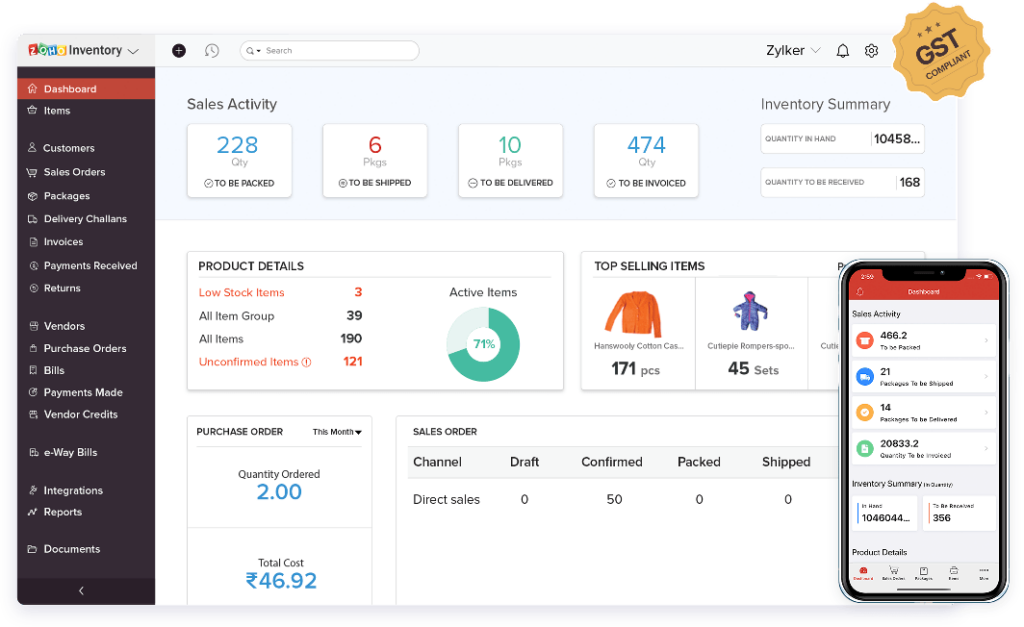
There are a lot of things that brands and their marketing teams need to keep track of these days. They need to keep track of how many likes, followers, retweets, comments, shares, tags, mentions, and so on they have. Also, if your business is still going strong, especially after the COVID-19 pandemic, you should remember to be thankful.
When you have more than 20 social media networks for marketing, it’s challenging to monitor your Google ranking. Don’t social networks change the way people look for information? Have these channels gotten to the point where they can replace Google?
Should you still care how you rank on Google in the year 2022?
Google has around 86 billion monthly visits, according to Statista. Facebook generates 20 billion monthly visits, while Instagram and Amazon have over 4 billion. In fact, Google has been the most popular website for the past ten years.
So, yes, you should still care how you rank on Google in the year 2022.
Getting a high Google ranking is still one of the hardest things to do, even after 10 years. First of all, it’s tough. Hosting Tribunal says that every day, about 2.75 million posts are made on WordPress alone. Second, you need to figure out how Google’s algorithm works.
We’ve put together a list of 15 SEO practices to help you figure out how to rank higher on Google. You might already be using some of these tips, while others might be new to you. You should look at each and make improvements in the new year.
15 SEO Tips to Rank Up in Google

Pay attention to on-page SEO
On-page SEO will still be easy in 2022. It’s quick and gives speedy results. It’s anything you can edit on your website’s pages, like headlines, page names, and graphics. Off-page SEO makes your site relevant to search engines. Getting additional backlinks is one way to do this, which we’ll discuss later.
Here are some of the best things you can do for on-site SEO:
- Put your keywords at the beginning of your title tags.
- Pay attention to making long-form content (aim for at least 1,800 words)
- Put your keyword on the page two to three times (keyword stuffing will get you the opposite result)
Don’t forget about technical SEO.
Technical SEO, in short, means making sure that your website is set up in a way that makes it easy for search engines to crawl and index it. Content is still king, but all your work will be for nothing if search engines can’t find, crawl, and index your pages.
For instance, you’ll have to make sure:
- All your pages are secure
- Your site is set up for mobile users.
- You haven’t copied someone else’s work or put similar things on different pages of your own site.
- Pages load quickly
- Every link works.
Don’t settle for content that isn’t very good
Backlinks, which are links on other websites that lead back to yours, are a big part of how Google ranks websites. So, getting people to share your posts on social media should be one of your main goals. And you can only expect people to do that if you regularly post good content.
Backlinks not only show that other people find your content useful, but they also show that you know a lot about your niche. And the more people who link to your content, the more Google knows that your content is trustworthy and worth sharing.
But you can’t just make content, sit back, and hope that other people will share it. Instead, you should try to get it by contacting other authoritative websites and brands and asking if they would be interested in publishing a guest post you’ve written. So, you can add your own links to content on your website that is relevant. Your domain authority (DA) score can also go up if you get high-quality sites to link back to yours. Again, this strategy will only work if the content you make is good. This means you should be careful not to come across as too spammy, which is a common mistake people make when writing guest posts.
Overall, quality, relevant content is more important than the number of keywords on a page these days. We said earlier that you should try to write at least 1,800 words, but posts with more than 3,000 words work even better for getting links. After all, it’s not the keywords on their own that keep people coming back to your page, but the quality of your content as a whole. In other words, the best way to get to the top is to write something that is important, interesting, and well-written.
Make links within your site
We’ve talked a lot about how important backlinks are, but you should also work on creating links within your own site. A link that goes to another page on the same domain is called a “internal link.” In short, they help Google find your web pages and put them in its index.
When you use internal links, one of the benefits is that the anchor text can be the same as the content. So, they’re easy to make and you don’t have to rely on other websites. You should put the internal links as close to the top of the page as possible. This can also help lower your bounce rate.
Include LSI keywords in Your SEO
Latent semantic indexing, or LSI keywords, are related phrases that a search engine like Google can use to figure out what a page is about. But they are not all the same. Instead, they are phrases and words that are related to your main keyword.
For example, if your main keyword is “influencer marketing,” LSI keywords could include words and phrases like “social media,” “marketing campaigns,” “brands,” “Instagram,” “marketers,” “endorsements,” etc. You know what I mean.
You can still use synonyms, but you’ll also need to use LSI keywords. This is because search engines have changed over time. Today, you don’t have to use too many keywords on a page so that Google can figure out what it’s about.
In fact, it’s no longer enough to just optimize your content for a small number of keywords. Google is more interested in what your page is about overall. So, it will check if your content is about the topic by looking for these kinds of keywords.
Also, using LSI keywords helps improve the depth of your topic, which helps with relevancy. In 2022, it will be more important to know a lot about a subject (hence, the preference for long-form content). So, make sure to build and expand your content around other related keywords and subtopics as well.
Since there are free online tools that will do this research for you, you have no reason not to put in the “extra effort.” You can look at tools like LSIGraph or KeySearch to find LSI keywords that are relevant.
Expertise, Authority, Trust
These are the three things that Google looks at to figure out where your website might rank. Even more so if your website is about so-called YMYL topics (aka your money or your life). Most of the time, these include information about health, law, safety, or money.
Expertise means that your author has a good reputation and a lot of experience (s). Will people who visit your website find content written by authors they can trust and who have a lot of experience? You can show that you know what you’re talking about by putting short author bios on your website, like I have.
Authoritativeness has mostly to do with your online reputation and how well known you are. That’s another reason why it’s important to have authoritative sources link back to your content. For example, a press release can be helpful if you want the right kind of press to talk about you (in SEO, there’s such a thing as “bad publicity”)
The other two things have a lot to do with how trustworthy someone is. If you’ve shown that you know what you’re talking about and other sources look to you for information, Google will see you as reliable.
A lot of the other tips in this blog post can help you improve your E-A-T score in the long run. For example, high-quality articles can show that you know a lot about your niche and make your business look like an authority. Site security can also help build trust.
Match the searcher’s goal
Do you know what your readers want to know about the things you’re going to write about? You might think they already know all the basics about a topic like influencer marketing and want to know all the in-depth details, or vice versa.
Google basically gives more points to the websites that share the content that people search for the most. What do the people you want to reach usually type into Google’s search bar? Do they use the Internet to find how-to guides, examples from real life, or tips for beginners?
One way to make sure your content matches what people are looking for is to look at what’s on the first page. Do your articles talk about those things? If not, look at it as a chance to update some of your older content so that it fits better with what your target audience is looking for online right now.
Lower your “bounce rate”
If people land on your site, look at one of your pages, and then go back to the search page within a few seconds, it will hurt your search rankings. Google sees this as a sign that people aren’t happy with your website. In other words, if your bounce rate is low, it means that people like to look around your site.
A low bounce rate is good for your search engine ranking, and it also gives visitors more time to learn about your brand, which can help boost sales and customer loyalty. At the end of the day, isn’t this what you really want?
To lower your bounce rate, make sure that all of the most important information is above the fold. This means that visitors shouldn’t have to scroll down to find what they’re looking for. Adding a table of contents or a summary like we do can also help visitors go straight to the section that answers their question. And adding visuals like infographics and videos is a must if you want your content to be easy to understand, which brings us to our next SEO tip.
Incorporate video
Content and keywords have been written about a lot. Most of the time, this is right away linked to written content like blog posts, white papers, reports on the state of the industry, etc. But video can (and should) also be used as content.
In fact, video carousels are a more common way for videos to show up in search results now than they were in the past. Remember that Google gives you more than just text results. It also gives you video, images, and news articles to make your experience better.
You can embed videos on your website, but it can also be helpful to make your own YouTube channel where you can upload these videos. Not only will it get Google’s attention, but it can also keep people on your site longer, which also tells search engines that your site matches what people are looking for.

Share statistical data
You can also try to include information, like facts and numbers, that other bloggers can use on their own sites. Statistics are often linked to by the people who make content, which can earn you valuable backlinks.
You could, for instance, add it as an infographic. As we’ve already said, adding visuals like infographics can also help lower your bounce rate, which will improve your page’s ranking on Google.
If you read our blog often, you’d know that we love to share statistics. As shown in Exhibit A, or the screenshot below, it has helped us make a lot of backlinks (and from authoritative sources, if we may boast a bit).
Get more people to click on your ads
Even though rankings are important, you should also pay attention to your organic traffic. After all, what good does it do if your target audience finds your site through an online search but doesn’t go to it? This is why it’s important to keep an eye on your click-through rate.
Focus on your metadata, like the URL and the metadata description that shows up below the search result, to get more people to click on your links. It might not seem like much, but if this information looks useful and trustworthy, your click-through rate will go up, which will help your rank.
All things considered, URLs that are shorter and still explain what they are are better. Don’t be afraid to play on the emotions of your readers in your title tags. This is one of the few chances you have to persuade people to click on your link.
Make a Google My Business page for your business
By making a Google My Business page, a business can also improve its Google ranking for local searches. In short, a Google My Business profile lets you control how your business shows up on Google products like Search and Maps.
So, make sure that all the information about your business, like your contact information, business hours, and address, is correct and full. Google’s help page says that relevance and prominence are two of the most important things.
Google will find it easier to match your Google My Business profile to the right searches if it closely matches what your target audience usually searches for. Also, if more people review your business on Google, it can help your local rank on Google.
There are a number of Google My Business scheduling tools and platforms you can try out to help you with this. You can look at Loomly, ContentCal, Sendible, and Social Pilot, among other things. Most of these will not only help you with Google My Business, but they will also work with other useful social platforms.
Look over your brand and its content
Your overall brand can also have an effect on how you rank. As was already said, your Google E-A-T score is based on whether or not people can trust your brand. Do people think you know a lot about what you do? Even though the quality of your content is very important, it won’t help as much if you don’t use your brand consistently.
Also, even though most of the focus is on making more content, don’t forget to review the content you already have. If your knowledge or standards have grown since you wrote a post, it’s best to get rid of it. Maybe the needs of your audience have changed? No matter what, don’t leave content on your site just because you think that more content will make you look better. Quantity shouldn’t take the place of quality, just like many other things in life.
Keep track of how well you did.
Not only should you do regular audits of your brand and content, but it’s also important to keep an eye on how your SEO is doing. Even though it won’t directly help your SEO (Google won’t know about this step), what’s the point if you don’t know how much organic traffic you’re getting? This is also a good way to make sure that you are ranking for all the keywords you’re aiming for.
Also, does the increase in traffic lead to more sales and customers? SEO takes time, and if you don’t keep track of your results, you won’t know what to change or if it’s worth your time.
Don’t be scared to hire professionals.
Even though you might leave more technical things like mobile optimization and web page speed to the pros, that doesn’t mean you should do everything else on your own. Whether you need a freelance content writer or a user experience (UX) designer, or if you need help with something else, hire a professional. We’re talking about how you show up online. That’s a lot on the line.
Conclusion
If you have been afraid of SEO in the past, don’t bring those fears into the new year. We’ve given you a long list of things to do and change, but as you may have guessed, many of them are related.
For example, if you have high-quality content, you will get more backlinks, which will increase your credibility. If you speed up your page, your bounce rate will go down, which shows Google that people trust your site. You know what I mean.
So, even though it may seem like too much work, if you’re working on one part, you’re also working on improving a number of other parts. And if you don’t know where to start, your content is a pretty good place to start. All clicks lead back to your content, after all.





